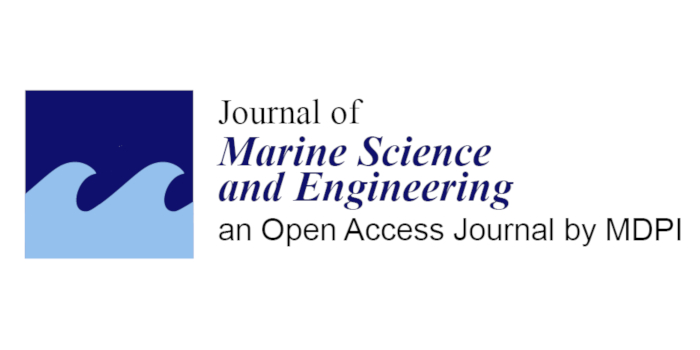Seafloor interdisciplinary observatories: a global vision for monitoring underwater processes, and submarine active volcanoes by technological enhancement and new scientific results
Paolo Favali
EMSO-ERIC
Francesco Italiano
INGV, Istituto Nazionale di Geofisica e Vulcanologia, Italy
ABSTRACT
The ocean covers 70% of the planetary surface, and yet we call our planet “Earth” and not - maybe more appropriately - “Ocean”. The ocean exerts a pervasive influence on the Earth’s environment but its nature is poorly understood. Developing a deep understanding of the ocean’s role and elucidating the complex physical, biological, chemical, and geological processes operating therein represent a major challenge in the opening decades of the 21 st century. The establishment of a global network of ocean observatories to monitor the sub-seafloor, seafloor, and water column has been providing powerful insights into complex processes such as the geo-, bio- and hydrosphere interactions and their evolution and variability through time. Sub-seafloor, seafloor, and water column Observatory Science is now a new branch of Earth (and Ocean) Sciences. It is indeed interdisciplinary in its nature and has the potential to greatly advance important scientific themes: the ocean’s influence on climate; the dynamics of the oceanic lithosphere and the imaging of the Earth’s interior; the relationship between fluids and life in the ocean crust; man- induced and natural changes in the coastal environment; turbulent mixing and biophysical interactions; ecosystem dynamics and biodiversity. Such a new science offers scientists new opportunities for studying multiple, interrelated natural phenomena over time scales ranging from seconds to decades, from episodic to global and long-term processes. Episodic processes include volcanic eruptions, deep-ocean convection at high latitudes, earthquakes, tsunamis, seafloor instabilities, and biological, chemical and physical impacts of storm events. At global level many marine infrastructural programmes are running, such as ONC (Ocean Networks Canada) in Canada, OOI (Ocean Observatories Initiative) and IOOS (Integrated Ocean Observing System) in USA, DONET (Dense Ocean floor Network System for Earthquakes and Tsunamis) in Japan, IMOS (Integrated Marine Observing System) in Australia, SAEON (South African Environmental Observation Network) in South Africa, ECSSOS (East China Sea Seafloor Observation System) in China, SOOS (Southern Ocean Observing System) in Tasmania (Australia), and EMSO ERIC (European Multidisciplinary Seafloor and water-column Observatory - European Research Infrastructure Consortium) in Europe. The up-to-date technology allows long-term experiments of years down to abyssal depths collecting time-series of data. The most striking characteristic of observatory design is that it allows addressing interdisciplinary objectives simultaneously across temporal and spatial scales. Depending on the application, in situ infrastructures can either be connected to a cable, which provides power and enables data transfer, or they can operate as independent, stand-alone benthic and moored instruments. In both cases, data are transmitted in real or near-real time either through fibre-optic cables or acoustic networks connected to surface transmission systems. Seafloor Observatory scientific results will have a strong impact not only on our present knowledge but also on human life during the coming century and beyond, leaving a legacy of awareness to future generations.
SPEAKER BIO
Dr Paolo Favali, research Director at INGV (Istituto Nazionale di Geofisica e Vulcanologia) from 2000 to 2015,
now retired acting as Associate Researcher to INGV. Freelance consultant since 2017. He has more
than 40 years of experience with main fields of interest in Natural Hazards (mainly Seismic),
Seismotectonics, Geodynamics, Geophysics, Applied Geophysics, Marine and Environmental
Sciences. He cooperates since over 30 years, acting also as coordinator, in research and
technological projects with many Italian/International Universities, Scientific Institutions and
Industries. In these projects complex underwater systems and sensor prototypes have been
developed, realised and validated not only for scientific uses with a complete interdisciplinary
approach from shallow to deep waters.
Member of the Task Force of ITU (International Telecommunication Union)-WMO (World
Meteorological Organization)-IOC (Intergovernmental Oceanographic Commission) of UNESCO
(2011-ongoing). Member of the International Science Advisory Board (ISAB) of Ocean Networks
Canada (ONC) (2014-2021).
Spokesperson of the Research Infrastructure EMSO ERIC (European Multidisciplinary Seafloor
and Water-Column Observatory European Research Infrastructure Consortium, www.emso.eu),
now ERIC (European Research Infrastructure Consortium), for which he is acting as. Coordinator
of the Joint Research Unit (JRU) EMSO-Italy (www.emsoitalia.it) (2015-2025). He published over
150 papers in peer-reviewed international and national journals, including 3 books.
Dr Francesco Italiano, researcher at INGV and the Director of the INGV, Sezione di Palermo since 2016. His research
activity has been mainly focused on fluids geochemistry in different terrestrial and marine
environments with an expertise in noble gas geochemistry. In the field of natural risks monitoring,
he is involved in volcano monitoring activities planned with the National Department of Civil
Protection. He manages and participates in research projects funded by regional, national and
European funding agencies (H2020 DOORS- Developing Optimal and Open Research Support for
the Black Sea; PON infratsrutture IPANEMA- Implementazione del laboratorio natural ECCSEL di
Panarea e dell’osservatorio marino; PON Cluster ITEM - Innovazione tecnologica per la tutela e
valorizzazione degli ecosistemi marini; PON “R&C” Marine Hazard; INTERREG Italia-Malta
BESS - Pocket Beach Management & Remote Surveillance System; Athens University SANTORY
-SANTORini's seafloor volcanic observatory; POR Sicilia IDMAR- Infrastruttura Multidisciplinare
Distribuita sul Mare).
He is the INGV representative member of the Joint Research Unit (JRU) EMSO-Italy
( www.emsoitalia.it ), for the National Hydrogeochemical network in partnership with ISPRA and
SNPA. He is the organizer of international conferences (ICGG-International Conference on Gas
Geocheistry in 2008 and 2019; International conference on Research in Shallow Marine and Fresh
Water Systems. He authored more than 150 ISI publications and is the editor of several special
issues.






































